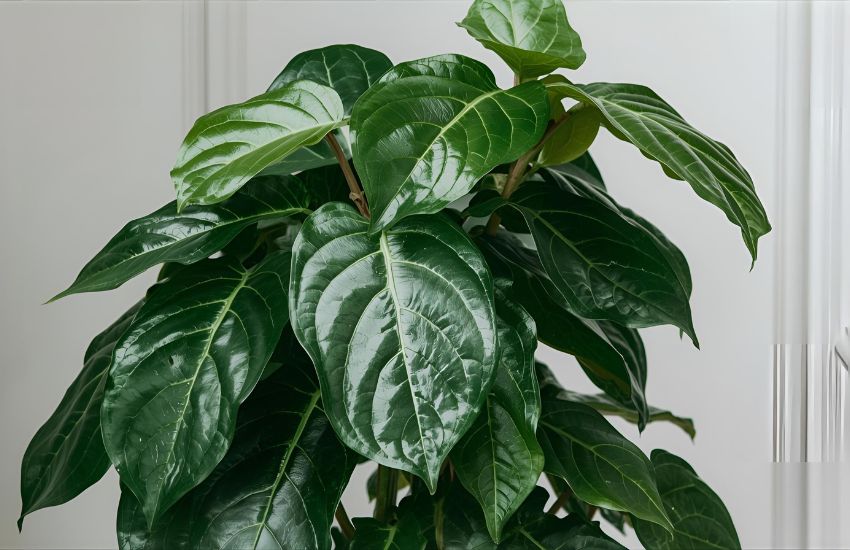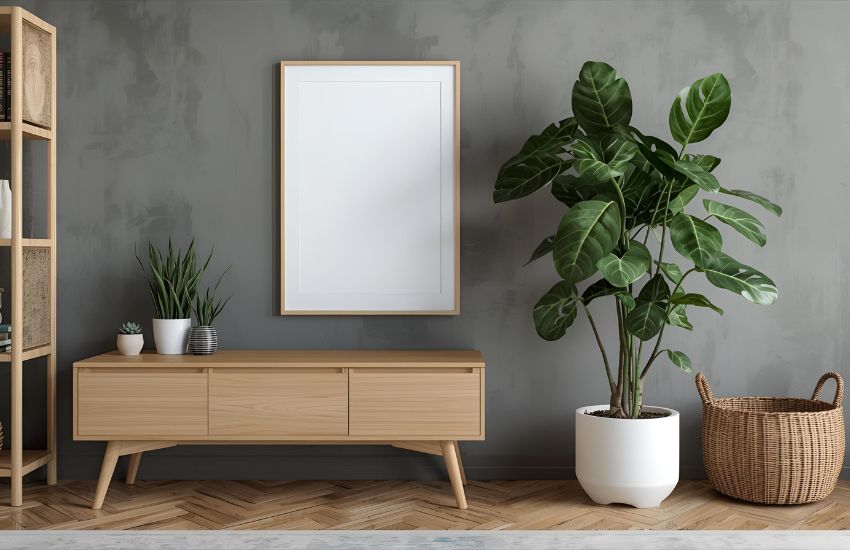A Fiddle Leaf Fig (Ficus lyrata) can transform any indoor space, giving it a striking, modern natural beauty. If you’ve ever admired its towering, glossy leaves, you likely wonder how to help a huge fiddle leaf thrive in your home without the frustration of leaf drop or brown spots. As a prized member of the Moraceae family, this houseplant responds best to a careful balance of sunlight, humidity, and well-draining soil, making proper care essential to its long-term health.
You’ll quickly discover that the right planter with drainage, occasional repotting, and a saucer to catch excess water can make a world of difference. Regularly pruning and taking cuttings can encourage growth while keeping your indoor plants looking lush and vibrant. Bright light is vital, but managing the plant’s exposure carefully prevents damage and keeps its leaves healthy.
In this guide, you’ll learn detailed fiddle leaf fig care tips, including soil selection, watering routines, pruning techniques, and how to prevent common issues like brown spots or leaf drop. By following these steps, you can confidently cultivate a thriving indoor houseplant that enhances your space with natural elegance.
Essential Fiddle Leaf Fig Plant Care: Water, Pot, and Pruning Tips for Growth

Watering and Soil Essentials
To keep your fiddle leaf fig healthy, it’s crucial to allow the soil to dry slightly between waterings. Overwatering can cause brown edges on leaves or root rot, while underwatering may stunt growth and lead to leaf drop. Use a well-draining potting mix suitable for indoor use, ideally enriched with organic matter. Ensure water reaches the bottom of the pot and drains freely through a saucer to prevent stagnant moisture.
Choosing the Right Pot
The choice of pot plays a significant role in your plant’s development. Terracotta pots are excellent for controlling moisture, while plastic pots can retain water longer, requiring careful monitoring. A decorative planter from a garden center can enhance your indoor décor, but always prioritize drainage over aesthetics to prevent soil to dry too slowly. Repot your fig every 1–2 years to accommodate new growth and maintain strong roots.
Light and Placement
Known as the fiddle leaf, this evergreen native to western Africa thrives in lots of bright, indirect light. Avoid prolonged exposure to direct sun, which can scorch leaves, but place your plant in a sunny spot or brighter light to encourage new leaves. Rotating your fig occasionally ensures even growth and keeps it looking full and symmetrical.
Pruning and Maintenance
Pruning is essential to control the “diva” nature of this trendy houseplant. Remove dusty or damaged leaves regularly to promote healthy growth and prevent pest infestations. Cuttings can also be propagated to expand your indoor plant collection. Fertilize lightly during the growing season using a balanced fertilizer to support vibrant new growth and maintain the fig’s lush, glossy appearance.
Extra Care Tips
Monitor your fig family member for pests such as spider mites or scale, especially if leaves appear dusty or sticky. Regularly cleaning leaves helps your plant absorb maximum light and stay healthy. Incorporating a ficus elastica nearby can create a harmonious, leafy display for indoor use, enhancing both your space and your plant-care routine.
Styling Your Fiddle Leaf Fig Tree for Beautiful Indoor Use and Décor

Styling your fiddle leaf fig tree goes beyond simply placing it in a corner; thoughtful positioning and care can enhance both its growth and your interior design. To create a visually appealing display, choose a bright spot with indirect light, as low-light or lower light conditions can slow growth and may even cause the leaves to drop. Maintaining adequate relative humidity around your plant helps preserve its glossy foliage, and regular waterings with filtered water ensure that the leaves stay healthy without mineral buildup.
For a stylish look, consider earthenware or decorative planters that complement your home while providing proper drainage. If you want your fig to appear bushier, pruning strategically at the node encourages lateral growth where each leaf connects to the stem. You can also propagate cuttings and pot your cutting in a small container to create additional indoor greenery. With careful attention to light, humidity, and placement, your fiddle leaf fig can serve as both a statement piece and a functional element of your décor, adding natural elegance to your living space while thriving as a trendy, well-cared-for indoor plant.
Conclusion
In conclusion, caring for your plant requires careful attention to its unique needs. While a sprout may appear delicate, understanding the finicky nature of young growth ensures it thrives into a strong, glossy adult. Avoid placing your plant in a drafty location, and monitor moisture levels carefully to prevent spindly growth. Using a humidifier or giving a light mist can help replicate its natural habitat, providing the consistent humidity that encourages robust development. By aligning your care routine with these essential practices, you create an environment where your plant can flourish beautifully.
Take action today: invest in a reliable humidifier, monitor moisture levels diligently, and give your plant the care it deserves—transform your indoor space into a lush, thriving sanctuary.
Frequently Asked Questions (Fiddle Leaf Fig Plant: Indoor Ficus Lyrata Tree Care for Modern Natural Beauty)
Does Ficus lyrata like sun or shade?
Ficus lyrata, or fiddle leaf fig, prefers bright, indirect sunlight to thrive indoors. Direct sunlight can scorch its leaves, while too little light slows growth and causes leaf drop. Placing it near an east or south-facing window with filtered light is ideal for healthy development.
Is the fiddle leaf fig a lucky plant?
Yes, the fiddle leaf fig (Ficus lyrata) is considered a lucky plant, especially in Feng Shui. It is believed to bring positive energy, prosperity, and good fortune when placed in homes or offices. Its large, vibrant leaves symbolize growth, abundance, and harmony in the surrounding space.
How to take care of a fiddle leaf fig tree indoors?
To care for a fiddle leaf fig indoors, place it near bright, indirect sunlight. Water moderately when the top inch of soil feels dry, ensuring proper drainage. Maintain high humidity, avoid drafts, and wipe leaves regularly. Rotate the plant occasionally for even growth and remove any damaged leaves.
Is Ficus lyrata a tropical plant?
Yes, Ficus lyrata, commonly known as the fiddle leaf fig, is a tropical plant native to West Africa. It thrives in warm, humid environments with indirect sunlight. Being tropical, it requires consistent moisture, well-draining soil, and protection from cold drafts to grow indoors successfully.
